An 11 Day / 10 Night journey exploring China’s architecture from ancient capitals to contemporary skylines.




China by Design 11 day / 10 night travel program PRIVATE TOURING
Embark on an immersive architectural journey through China, accompanied by architects who reveal the ideas, symbolism and innovation shaping the country’s most influential built environments. From Beijing’s imperial axis to Tang era city grids, soaring Shanghai skylines and tranquil water towns, this experience blends culture, design and history into a compelling exploration of China’s evolving identity.
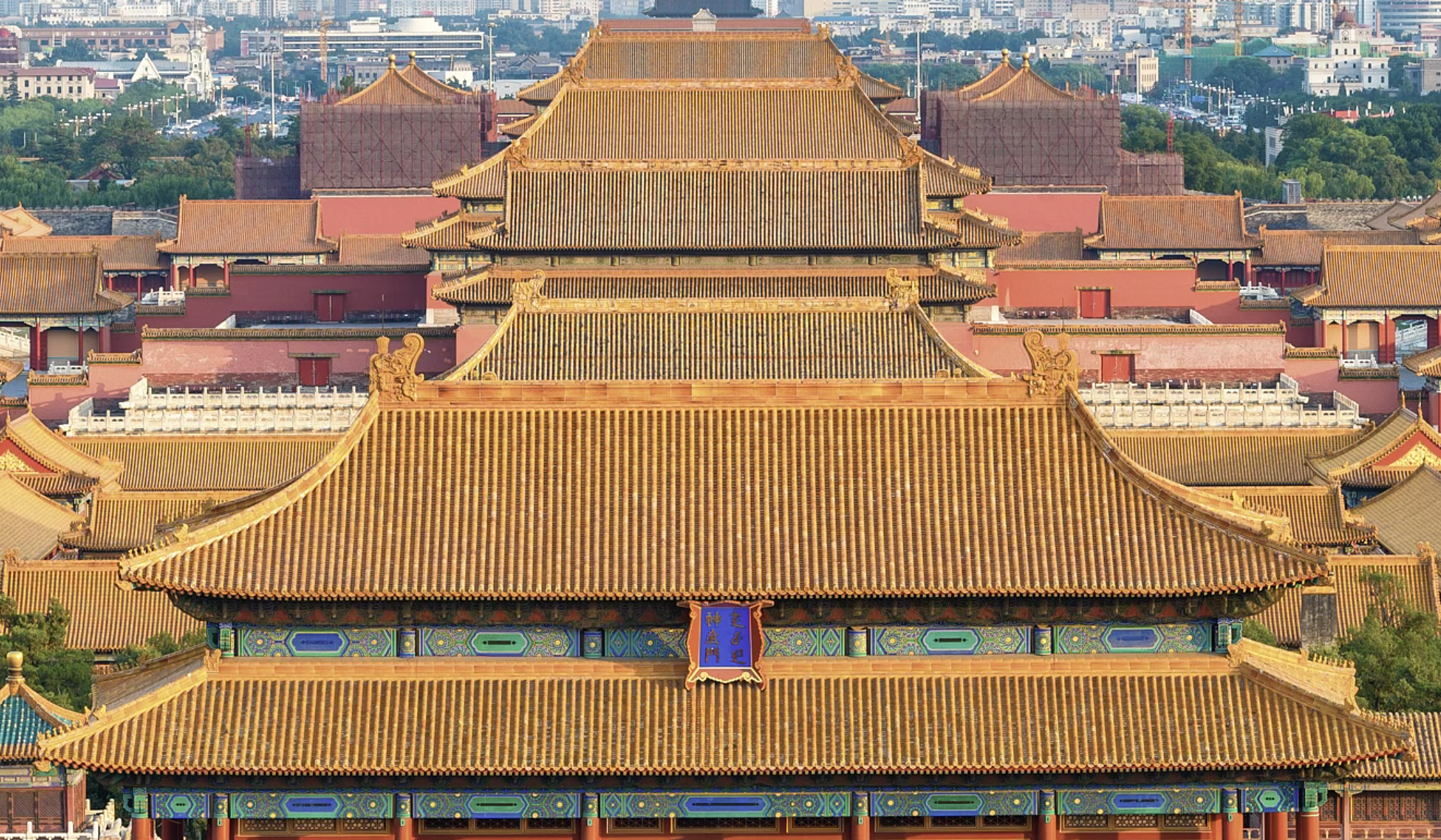
Upon arrival in Beijing, you will be met by your travel expert and transferred to your hotel. The drive into the city offers a first sense of the vast scale and ordered geometry that have defined the Chinese capital for centuries. Long boulevards align with precision, hinting at the legendary grid that continues to shape movement across the metropolis. Throughout the journey, architects join us on select days, guiding us through the stories and design principles embedded in China’s built environment.
After settling in, we begin with an introduction that places Beijing in its architectural context. The capital is one of the world’s most complete expressions of axial city planning. Its historical layout follows a disciplined north to south line symbolising imperial authority and cosmic order. This axis shaped everything from palace arrangements to city gates, creating a coherent urban diagram that survives even amid modern growth.
We make our way to Jingshan Park for an elevated panorama over the Forbidden City. From here the palace unfolds in perfect symmetry, its rhythmic courtyards revealing a rare clarity of planning. The relationship between direction, hierarchy and ritual becomes visible in a single sweeping view. Our architect begins to explain how successive dynasties added layers to this order while maintaining the core structure that defined Beijing through time.
As the afternoon softens, we explore neighbourhoods around the central axis, tracing how imperial planning influenced surrounding districts. Conversations emerge naturally as we move between viewpoints, laying the foundations for the coming days. What becomes clear even now is that Beijing is not merely a city but a physical expression of philosophical ideas translated into form.
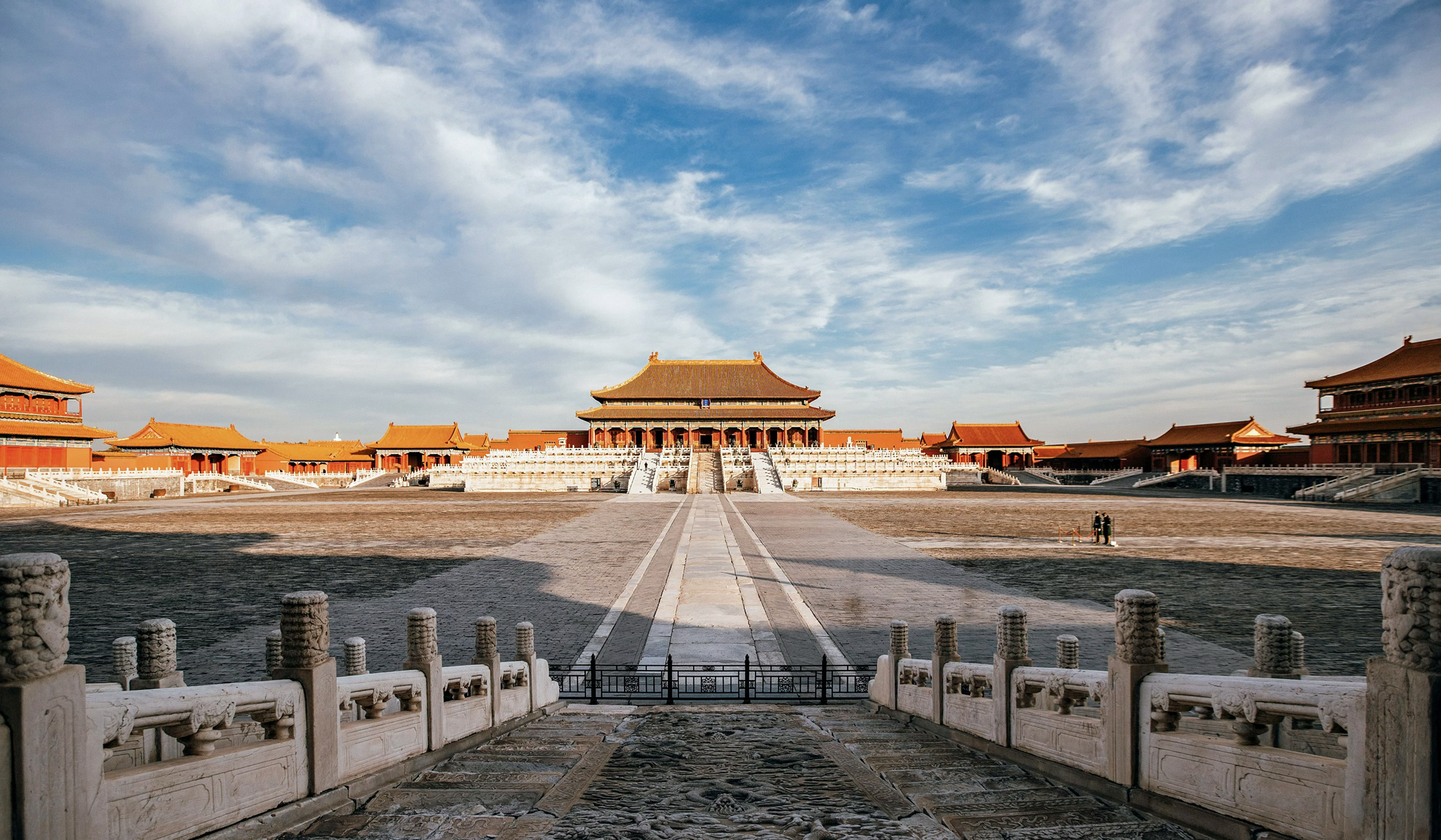
We begin the morning at the Forbidden City, exploring one of the most significant architectural achievements in human history. With our architect guiding the experience, we move beyond the surface of the palace complex to understand how its spaces were designed to express hierarchy, cosmology and order. Each courtyard unfolds in a deliberate sequence, transitioning from public ritual to administrative affairs and finally to private quarters. This spatial progression reflects Confucian ideals in built form, where the organisation of architecture mirrors the structure of society.
Entering through the Meridian Gate, the scale and symmetry become immediately apparent. Raised platforms, axial alignments and a disciplined grid create a monumental composition that reinforces imperial authority. Our architect explains how the timber frame system, built without nails, combines engineering mastery with symbolic meaning. Bracket sets, roof pitches and colour palettes reveal a language of power and stability woven into every detail.
In the afternoon we continue to a nearby hutong district, where the intimate siheyuan courtyard house provides a vernacular counterpart to the palace. Narrow alleys and modest facades conceal homes organised around family courtyards that follow many of the same spatial principles as the Forbidden City. This contrast highlights the continuity of Chinese architectural philosophy across social classes. Our architect draws attention to how both imperial and domestic spaces rely on orientation, privacy gradients and controlled movement.
As we wander through the hutongs, we observe how daily life unfolds in an environment shaped by centuries of tradition. Conversations drift from craftsmanship to urban evolution, revealing how these neighbourhoods once formed the foundation of Beijing’s social and architectural identity.
By day’s end, we return to our hotel with a deeper understanding of how Beijing expresses its history not only through grand monuments but also through the quiet logic of its everyday spaces.
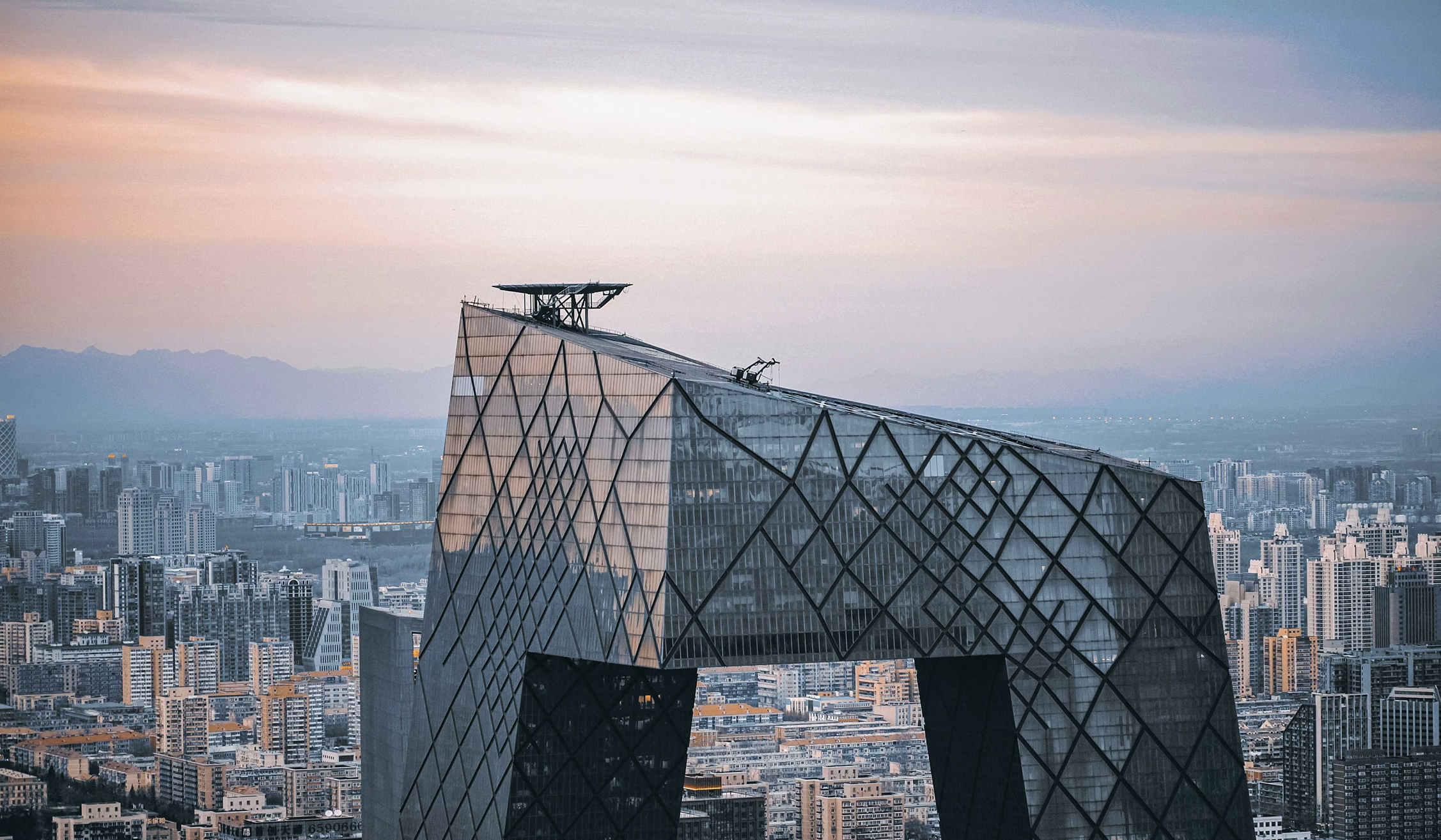
Today we shift from imperial order to the bold experimentation that defines modern Beijing. Our architect joins us to explore the landmark buildings that have challenged conventional ideas of structure, form and identity, revealing how the city has become a major arena for global architectural innovation.
We begin at the CCTV Headquarters, a building that redefined the typology of the skyscraper. Instead of rising vertically, it loops across space in a continuous geometric gesture. Its two leaning legs support a vast suspended section that appears to defy gravity. Our architect explains how this radical form required new structural strategies, particularly for load paths and wind resistance. Standing beneath the dramatic overhang, the tension between mass and openness becomes a defining experience.
From here we continue to Galaxy SOHO, designed by Zaha Hadid. The flowing, interlinked domes and bridges present a stark contrast to Beijing’s traditional grid. Everything here suggests movement: there are no corners, no abrupt separations, only seamless transitions between volumes. Our architect highlights how this approach shifts the architectural language of the city, offering a vision shaped by fluidity rather than rigidity.
In the afternoon we travel to the foothills outside Beijing to visit the Commune by the Great Wall. This collection of villas, designed by leading Asian architects, forms an open air exhibition of early twenty first century residential design. Each villa responds differently to the landscape, using varying strategies of transparency, anchoring, framing and elevation. Together they reveal the breadth of contemporary architectural thinking across the region.
We return to Beijing in the early evening with a renewed appreciation for the city as a place where traditional order meets experimental ambition, creating one of the most dynamic architectural landscapes in Asia.

Today we explore how Beijing expresses ideas of cosmology, ritual and renewal through both sacred landscapes and reimagined urban districts. Our architect joins us to guide the day’s conversations, unveiling the principles behind this enduring design language.
We begin at the Temple of Heaven, where architecture and theology merge into one coherent spatial idea. The Hall of Prayer for Good Harvests rises without a single nail, supported entirely by an intricate timber structure arranged in concentric rings. The building’s geometry reflects the ancient belief that heaven is round and earth is square, a principle that shaped Chinese planning for centuries. Our architect explains how numerology, astronomy and ritual informed everything from the height of platforms to the spacing of columns.
From these ceremonial origins, we continue to the 798 Art Zone, an industrial complex transformed into one of China’s most successful examples of adaptive reuse. Built originally with Bauhaus influenced principles, the factories feature sawtooth roofs, exposed brick and generous skylights. Their conversion into galleries and creative studios retains the raw industrial character while granting the district new cultural purpose. Our architect highlights how this transformation reflects broader conversations about heritage preservation in modern China.
As we explore the surrounding area, we observe how workshops, warehouses and public spaces have been adapted in ways that maintain memory while encouraging reinvention. Each intervention reveals a different strategy for balancing historical context with contemporary needs.
By the end of the day, a clear theme emerges: Beijing is a city where architectural meaning extends beyond form, embodying ideas about order, belief and transformation that continue to shape its identity.
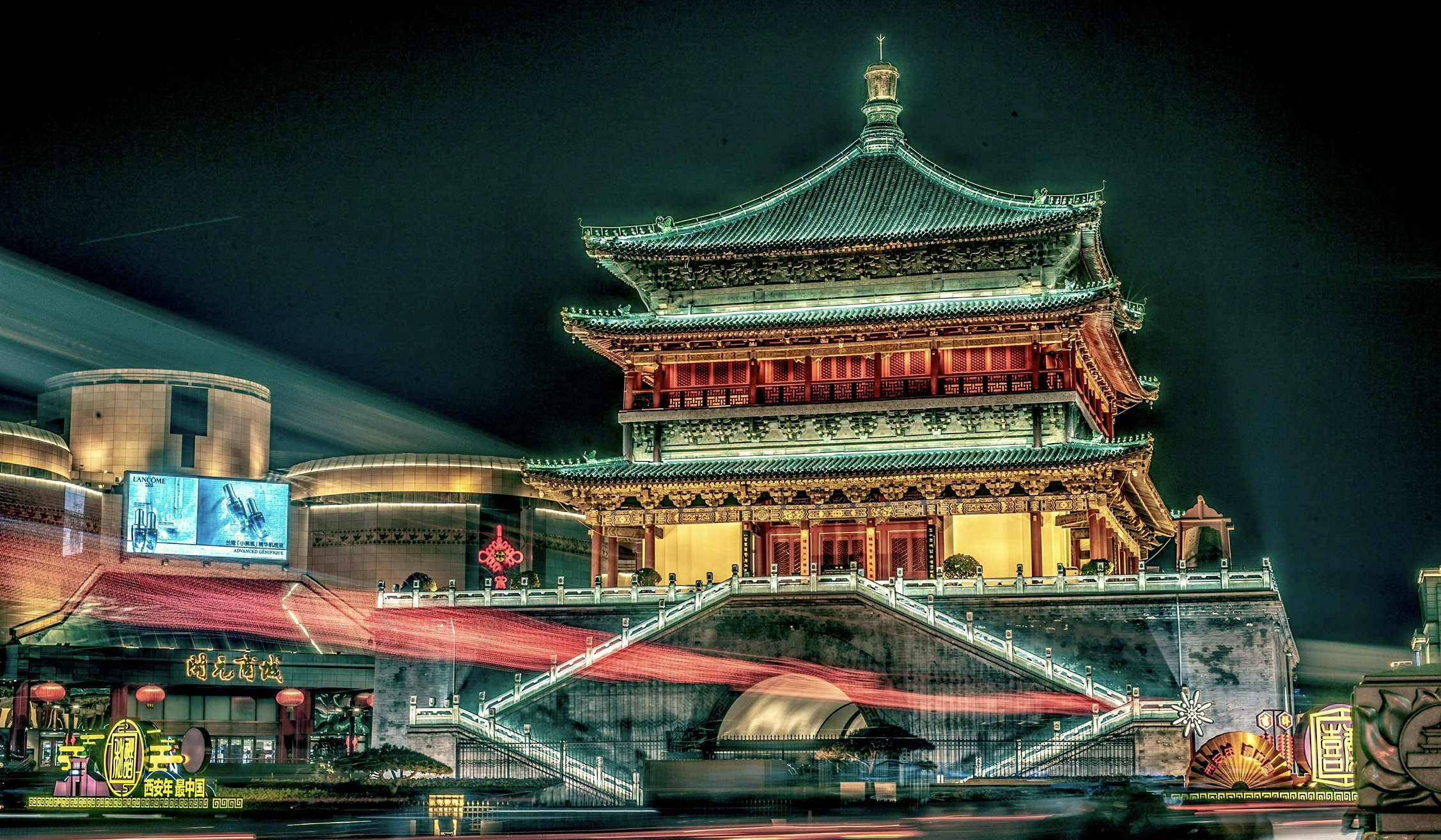
We travel by high speed rail to Xi’an, entering a city whose influence on East Asian urbanism extends far beyond its walls. After settling in, our architect joins us to explore how the city’s Tang dynasty plan became a blueprint for capitals across the region.
We begin with the ancient city walls, among the most complete defensive systems still standing. Their strict rectangular alignment reflects the geometry that defined Tang Chang’an, a city that once covered a footprint far larger than modern Xi’an. Walking along the ramparts, our architect explains how this plan influenced the layout of Nara and Kyoto in Japan, as well as major Korean capitals. Xi’an’s impact lies in urban order rather than individual buildings, offering a model of how power, ritual and daily life could be structured across a capital.
Descending into the city, we trace the still legible logic of the grid: broad avenues separating residential wards, markets, temples and administrative zones. This pattern reflects not only practical needs but also symbolic ones, positioning the emperor at the centre of a precisely organised diagram of authority. In the old town, we explore the Drum and Bell Towers area where traditional timber buildings combine classical proportions with later adaptations. Raised platforms, axial alignments and bracket systems reveal the enduring principles of Chinese architecture, even as the surrounding district has modernised.
By the end of the day, Xi’an emerges as a city shaped not only by its monuments but by an urban vision that influenced centuries of planning across East Asia.
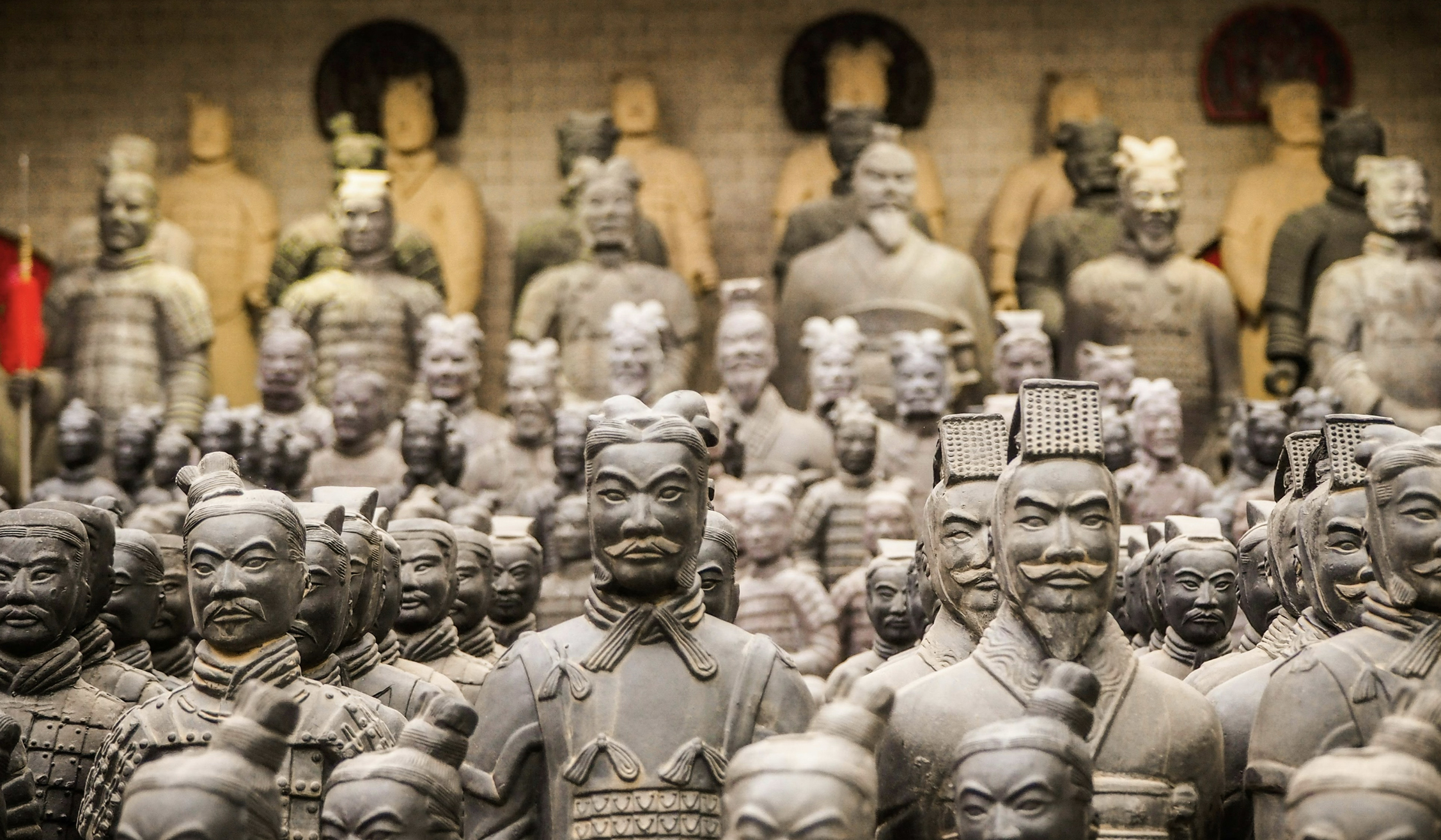
Today we explore two dramatically different architectural traditions: the monumental planning of the Qin mausoleum and the quiet ingenuity of vernacular cave dwellings. Our architect joins us throughout the day to highlight how both forms respond to purpose, place and belief.
We begin at the Terracotta Army, where thousands of life sized clay soldiers stand in subterranean chambers arranged like real military formations. The pits reveal a sophisticated understanding of underground construction. Timber frameworks once supported the vast chambers before they were covered with earth, creating spaces that preserved the sculptures for millennia. Our architect explains how the mausoleum mirrors the structure of the imperial court, extending the emperor’s authority symbolically into the afterlife.
In the afternoon we continue into the loess plateau to explore yaodong cave dwellings, one of China’s most resilient vernacular building traditions. Carved directly from compacted earth, these dwellings maintain stable interior temperatures throughout the year, staying warm in winter and cool in summer. Their courtyards, arched entrances and vaulted rooms reflect generations of adaptation to climate and terrain. Contemporary architects increasingly study these earth structures as models of low energy living and environmental harmony.
Walking through the rural communities, we encounter a very different scale of architectural life. Here, space is shaped by necessity, resourcefulness and tradition. Yet despite the contrast with the imperial mausoleum, both sites reveal a shared understanding of how architecture can respond meaningfully to context.
By day’s end, we return to Xi’an with a deeper appreciation of China’s architectural spectrum, where monumental symbolism and vernacular practicality both hold enduring significance.

This morning we depart Xi’an by high-speed rail, travelling east across wide plains and river valleys towards Shanghai, a city where architectural ambition shapes one of the world’s most recognisable skylines. The journey allows time to absorb the ideas explored so far, from imperial planning to vernacular ingenuity. We arrive in Shanghai by mid-afternoon and transfer to your hotel to check in and refresh briefly.
As the late afternoon light begins to soften, we make our way towards the Bund for our first encounter with the city’s iconic riverfront. Rather than a full daytime exploration, we experience the Bund at a moment when the façades start to glow and the skyline begins to shift into its evening rhythm. To mark the occasion, we head to one of the Bund’s rooftop bars for sundowners, a perfect elevated vantage point from which to absorb the city’s architectural dialogue.
With the Huangpu River below and the historic buildings at eye level, our architect begins to introduce the story of the Bund. Neoclassical banks, beaux arts consulates and art deco towers form a monumental frontage that once symbolised Shanghai’s power and global reach. From above, their proportions, rooflines and decorative details become clearer, revealing the intentional grandeur embedded in their design.
As the sun sets, the lights of Pudong rise across the water. The glass towers and sculpted silhouettes of the Lujiazui skyline illuminate in sequence, transforming the view into one of the most dynamic architectural compositions in Asia. Our architect highlights how this interplay between historic solidity and futuristic verticality defines Shanghai’s identity as a city of contrasts.
After sundowners, we take an unhurried stroll along the riverfront as the city lights deepen before returning to your hotel with the first impressions of a city where history and innovation coexist in luminous balance.
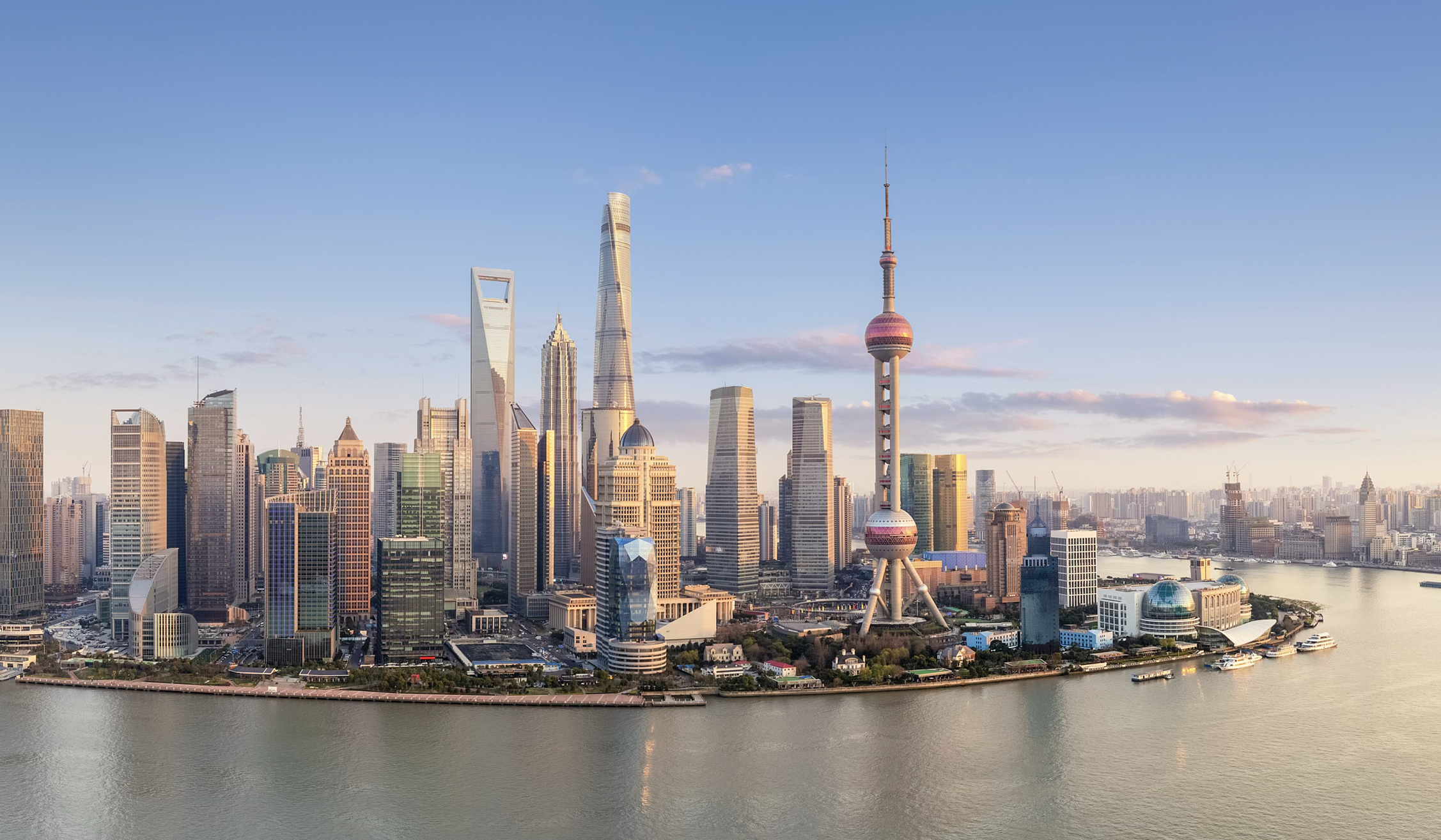
Today we explore Pudong, a district that encapsulates China’s architectural ambition. Once farmland in the early 1990s, it has become a global symbol of vertical urbanism. Our architect joins us as we examine the engineering breakthroughs, design philosophies and cultural ideas expressed across this evolving skyline.
We begin in Lujiazui, where Jinmao Tower, the Shanghai World Financial Center and Shanghai Tower form a defining vertical trio. Standing at their base, we take in the scale and intention behind their design. Jinmao Tower introduces the narrative, its tiered silhouette echoing a traditional pagoda. Our architect explains how this cultural reference pairs with a steel frame engineered to withstand coastal winds and seismic pressures, illustrating the balance of symbolism and structural logic.
We continue to the Shanghai World Financial Center, distinguished by the trapezoidal opening near its peak. This void reduces wind load while giving the tower its iconic profile. Inside, its structural spine and skybridge reveal new thinking around movement, structure and spatial flexibility at extreme height.
The final tower is Shanghai Tower, a landmark of sustainable engineering. Its spiralling façade reduces wind resistance, while its double-skin curtain wall enhances energy performance. Internal atriums act as vertical neighbourhoods, softening the sense of scale and creating human-focused spaces within a building of considerable height.
We then move through the elevated walkways, plazas and transport links that bind Pudong together, observing how movement flows across multiple levels. As the light changes, the skyline seems to shift with it.
By day’s end, Pudong emerges not only as a financial centre but as a laboratory for twenty-first century architecture, shaped by experimentation, boldness and a constant engagement with height and space.
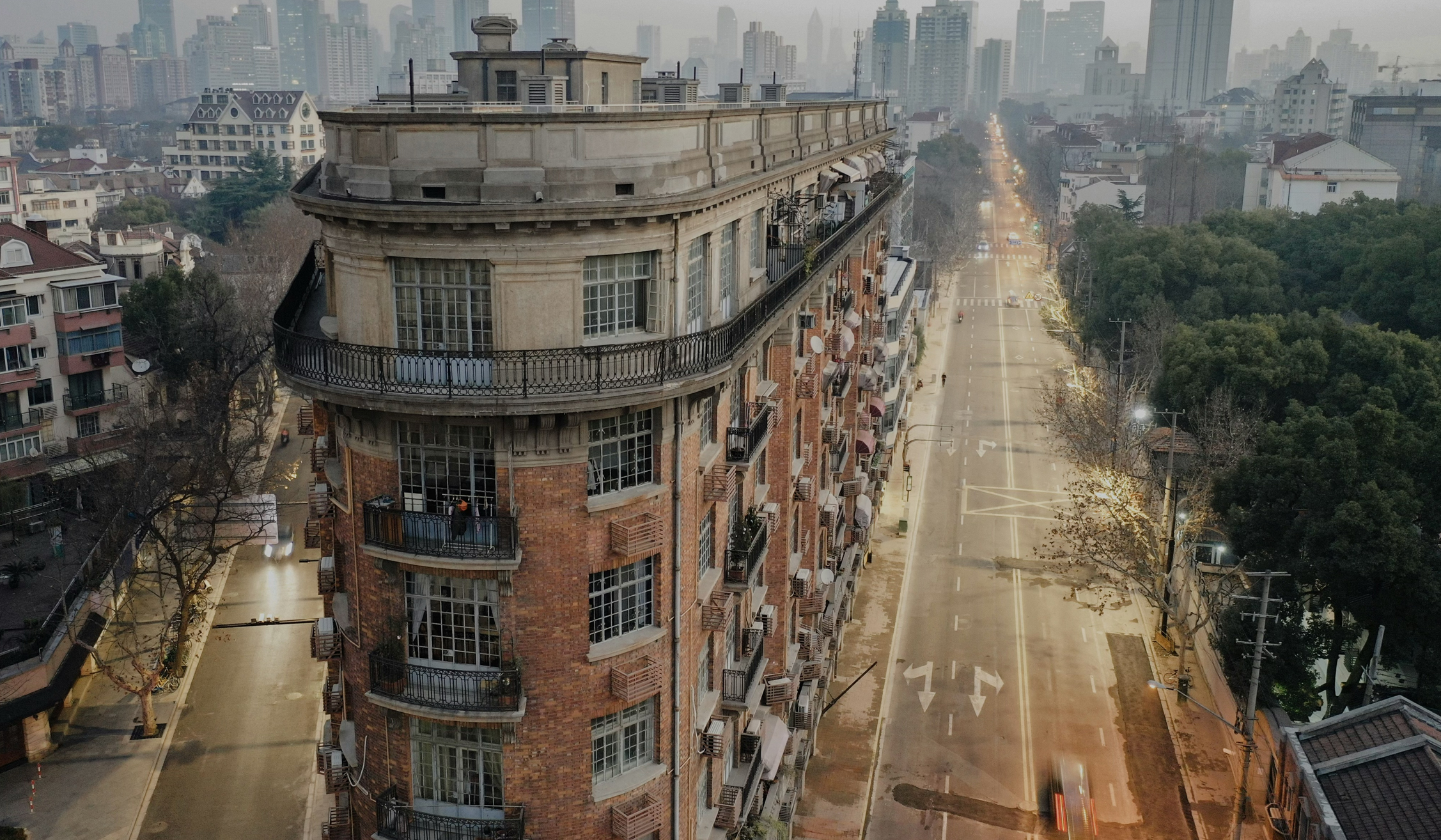
Today we slow the pace and explore one of Shanghai’s most distinctive urban forms: the lilong neighbourhoods of the former French Concession. These communities blend European façades with Chinese spatial logic, forming a typology found nowhere else in China. Our architect leads the day, helping us read the lilong not only as architecture but as a living social system.
We begin along streets shaded by old plane trees, a legacy of early French planning. Townhouses with brick façades, balconies and shuttered windows hint at European influence. Yet as we step into the narrow lanes beyond the façades, the atmosphere shifts. Homes face one another across intimate alleyways, gateways open into small courtyards, and the organisational rhythm feels distinctly Chinese.
Our architect explains how the lilong emerged in response to rapid population growth in the early twentieth century. These neighbourhoods balanced density with liveability, using lanes, courtyards and graduated privacy to maintain strong social ties. The hierarchy from street to gateway to lane and finally to home creates a gentle choreography of movement and interaction. This human-scaled structure continues to inspire architects seeking alternatives to vertical urbanism.
We explore both restored lilong compounds and lived-in residential clusters. In revitalised areas, cafés, boutiques and studios occupy ground floors, showing how heritage architecture adapts to contemporary life. In quieter lanes, everyday scenes—neighbours talking, plants hanging from balconies, bicycles resting against brick walls—reveal how these environments nurture community over generations.
Our architect draws attention to brickwork patterns, timber frames, drainage tiles and the design of staircase houses once shared by multiple families. Each detail adds to the story of practicality, resilience and stylistic charm.
By day’s end, the lilong stands out as one of Shanghai’s most meaningful contributions to urban design, expressing a city that blends influences while sustaining intimacy, connection and identity.
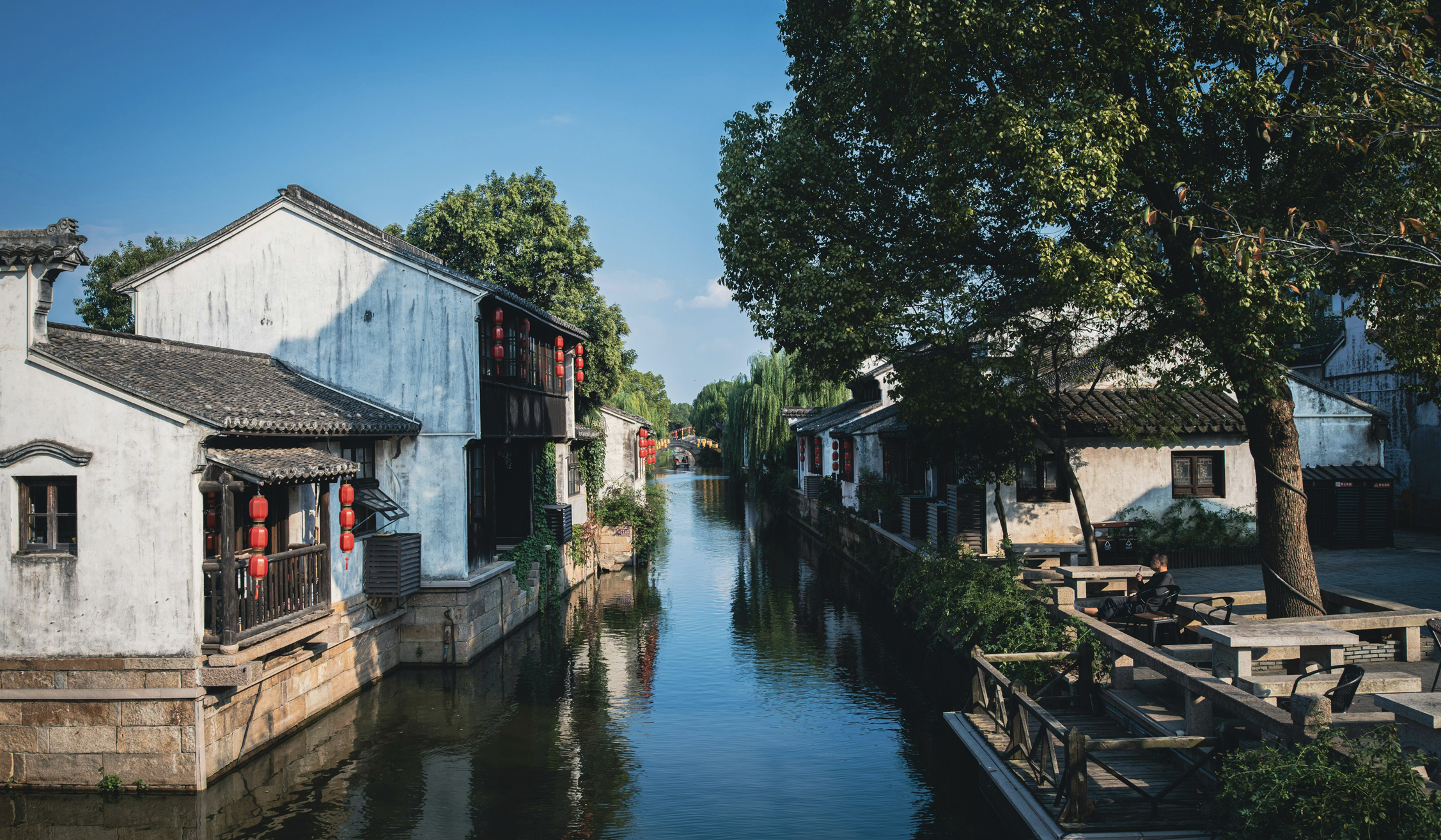
Our final full day leads us into the serene waterways of the Jiangnan region, where centuries of architectural practice evolved around water, materiality and climate. These historic towns offer a living portrait of traditional Chinese urbanism. With our architect guiding the narrative, we explore how landscape, craftsmanship and the rhythms of water shaped one of China’s most recognisable architectural identities.
We begin in a classic water town where canals weave between whitewashed homes topped with dark tiled roofs. Stone bridges rise in gentle arcs across the waterways, their silhouettes mirrored in still reflections. Moving through narrow lanes, we see how houses align with the canals to maintain a constant dialogue between architecture and the natural environment. Our architect explains how water management shapes daily life: raised walkways absorb seasonal flooding, while terraces and channels respond to shifting levels with quiet efficiency.
We examine the region’s material language—timber framing, lattice windows and river stone foundations—and how these elements negotiate humidity, light and heat. Homes rely on natural ventilation, guiding airflow through courtyards and across water surfaces. These passive strategies reveal the environmental intelligence that defines Jiangnan design.
In the afternoon we visit the Fuyang Museum near Hangzhou, a contemporary cultural space conceived by Wang Shu. Its palette of recycled tiles, hand-laid brick and textured surfaces recalls the craftsmanship of traditional water towns, while its courtyards and controlled sightlines introduce a calm, modern rhythm. As we move through the building, we see how vernacular elements are reinterpreted with restraint rather than reproduced. Brick screens filter light, concrete planes frame soft views and circulation unfolds with the same fluidity we observed along the canals.
By experiencing both historic streets and contemporary design, we follow a continuous thread of architectural thought. As the day draws to a close, we return to the city where you can settle back into your hotel for the evening.

Our final morning in China is devoted to Yu Garden, a classical masterpiece that offers a gentle and contemplative close to the journey. Situated within the old city of Shanghai, the garden represents one of the most refined expressions of traditional Chinese landscape design. Created during the Ming dynasty, it embodies the belief that architecture and nature should exist in continuous dialogue. With our architect guiding the visit, we begin to understand how each space is not simply decorative, but part of a carefully choreographed sequence intended to evoke emotion, memory and introspection.
We move through pavilions, courtyards and covered walkways, each framing the landscape in a different way. Windows shaped like fans, vases and flowers turn the outside world into composed scenes, allowing the garden to unfold as a series of connected moments rather than a single view. Our architect highlights how the rockeries, bridges and ponds are arranged to mimic mountain and water landscapes on an intimate scale. The use of contrast creates balance: enclosed chambers open suddenly to expansive ponds, while quiet corners lead to dramatic rock formations. This interplay reflects a philosophical approach to space where beauty is revealed gradually rather than all at once.
As we explore, we appreciate how Yu Garden captures the essence of Chinese architectural thinking. It offers a counterpoint to the monumental geometry of Beijing, the vast spatial order of Xi’an and the vertical dynamism of Shanghai. Here, architecture is contemplative, human scaled and deeply connected to nature. The experience provides a graceful conclusion to our exploration of China’s varied design traditions.
After our visit to Yu Garden we transfer to the airport for your onward flight. The drive offers a final glimpse of Shanghai’s layered skyline, from historic masonry to sculpted towers, reminding us of the remarkable architectural diversity encountered over the past eleven days. It is a fitting farewell to a journey shaped by conversation, curiosity and the enduring power of design.
PROGRAM CONCLUDES
![]()
Travel Designer Insights
This itinerary is crafted for travellers who appreciate architecture as a lens for understanding culture. With architects guiding the key touring days, the journey reveals stories embedded in palaces, skylines, neighbourhoods and river towns. It blends depth with discovery, balancing China’s enduring traditions with its bold contemporary vision. The result is a thoughtful, layered and genuinely illuminating exploration of place.
Click to hear your Travel Designer discuss the merits
and attractions of this Program

TRAVEL INSPIRATION
CHINA
STORIED IMAGERY ON THE DESTINATION

BE INSPIRED
CHINA
VIDEO PLATFORM

IMAGE BANK
CHINA
HIGH QUALITY VISUALS FOR DOWNLOAD
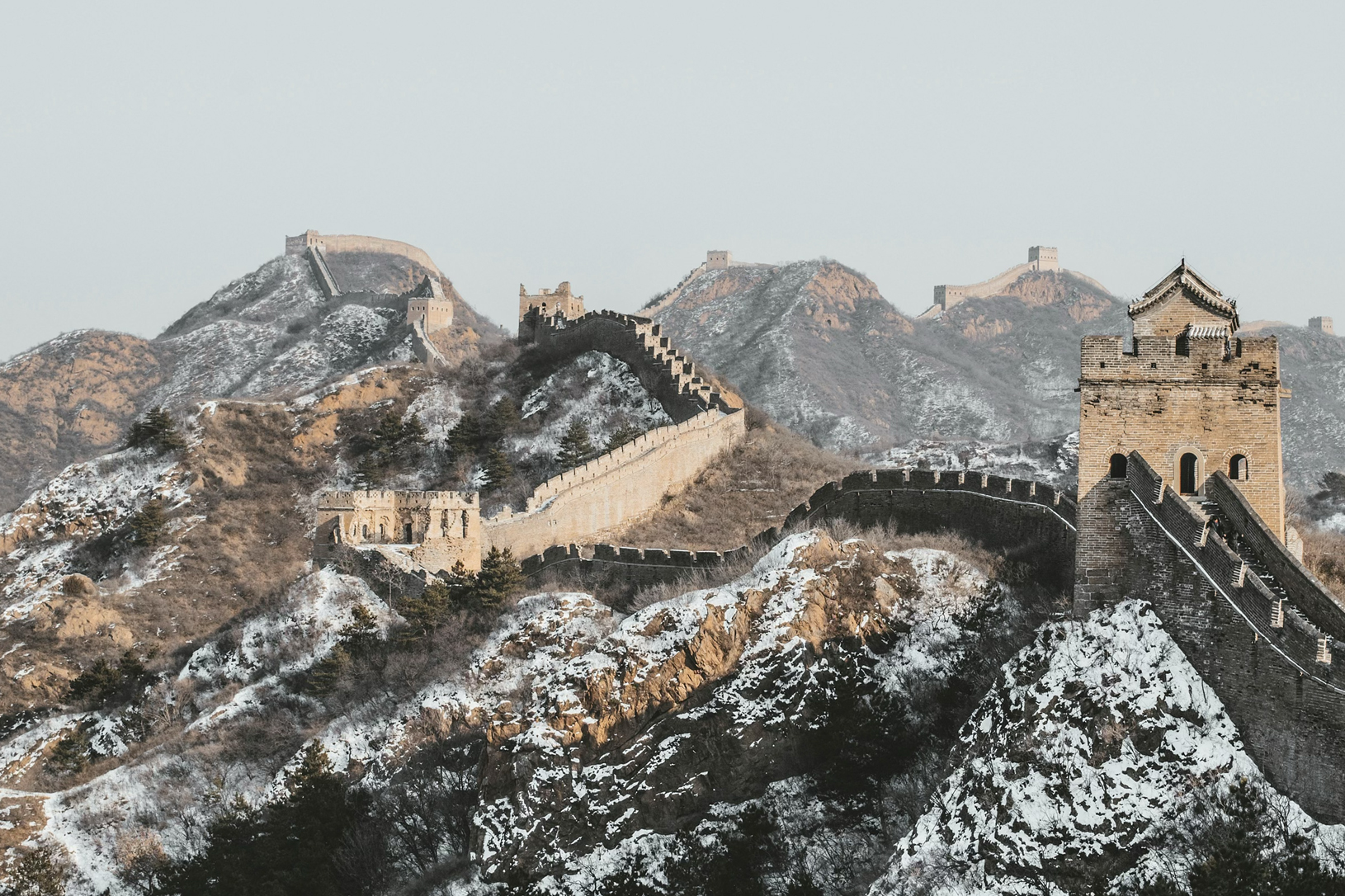
TRAVEL PORTFOLIO
CHINA
DISCOVER OUR PRODUCT RANGE
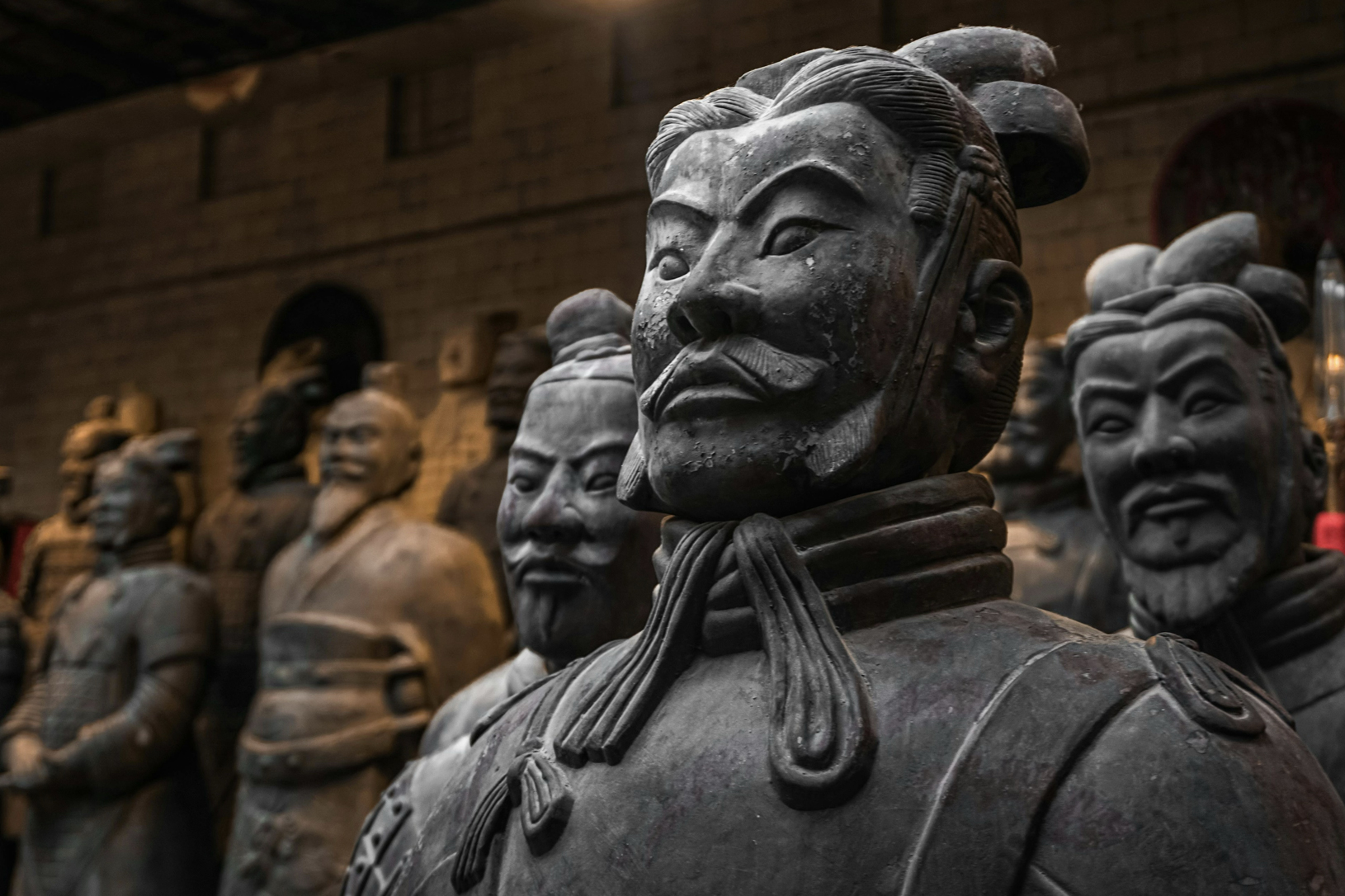
SUPPORT TOOLS FROM THE ASIA CONCIERGE WEB PORTAL
Asia Concierge China
Ocean Express A,
Suite 2503 NO.66 Xia Guang Li,
Chao Yang District
Beijing
China
Tel: +86 13 501 394 279

